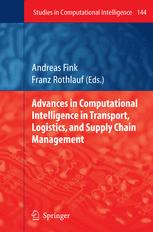

Most ebook files are in PDF format, so you can easily read them using various software such as Foxit Reader or directly on the Google Chrome browser.
Some ebook files are released by publishers in other formats such as .awz, .mobi, .epub, .fb2, etc. You may need to install specific software to read these formats on mobile/PC, such as Calibre.
Please read the tutorial at this link: https://ebookbell.com/faq
We offer FREE conversion to the popular formats you request; however, this may take some time. Therefore, right after payment, please email us, and we will try to provide the service as quickly as possible.
For some exceptional file formats or broken links (if any), please refrain from opening any disputes. Instead, email us first, and we will try to assist within a maximum of 6 hours.
EbookBell Team

0.0
0 reviewsThe book at hand presents a careful selection of relevant applications of CI methods for transport, logistics, and supply chain management problems. The chapters illustrate the current state-of-the-art in the application of CI methods in these fields and should help and inspire researchers and practitioners to apply and develop efficient methods. A few contributions in this book are extended versions of papers presented at EvoTransLog2007: The First European Workshop on Evolutionary Computation in Transportation and Logistics which was held in Valencia, Spain, in 2007. The majority of contributions are from additional, specially selected researchers, who have done relevant work in different areas of transport, logistics, and supply chain management. The goal is to broadly cover representative applications in these fields as well as different types of solution approaches. On the application side, the contributions focus on design of traffic and transportation networks, vehicle routing, and other important aspects of supply chain management such as inventory management, lot sizing, and lot scheduling. On the method side, the contributions deal with evolutionary algorithms, local search approaches, and scatter search combined with other CI techniques such as neural networks or fuzzy approaches. The book is structured according to the application domains. Thus, it has three parts dealing with traffic and transportation networks, vehicle routing, and supply chain management.